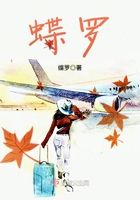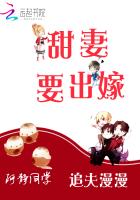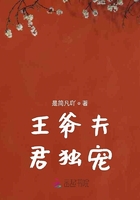“When you come (to the temple) in person, you make donation,” he joked,adding that he truly believes it is more respectful to worship in person than throughthe Internet.
Timeline
221-206 BC
Historians say evidence shows Chinese people burned paper offerings andpaper money at funerals as early as the Qin DynastyAD 220-265
It was during the Wei Dynasty that people began to burn small paper effigiesof then-everyday items, believing the ritual of love and respect would allow ones touse them in the afterlifeAD 265-420
The practice became a popular and important custom during the Western JinDynasty (AD 265-316) and Eastern Jin Dynasty (AD 317-420)1644-1911
By the end of the Qing Dynasty, paper effigy masters were enjoying extremelyhigh incomes. Businesses were largely family-run, with sons inheriting the skillfrom their fathers. Effigies began to include luxury items, such as watches andcars.
1960-1980
The industry deteriorated during the “cultural revolution” (1966-1976),when many masters moved to Hong Kong. Businesses were hit again by economicdownturns in the 1980s, while modern pressures also led to decline in the numberof people observing the tradition.
2000s-present
The market for paper effigies continues to struggle and fewer people learn thetraditional skill. With mass production of paper effigies growing on the mainland,Kelly Woo at Kung Fat Kwok said there are fewer than 100 masters now workingin Hong Kong.
CHINA DAILY
October 21, 2010
Too good to waste as rubbish is chic
Store ushers in ‘up-cycling’ for shoppers.
Emma Dai reports from Hong Kong.
In a city where brands rule, a new name is battling to make its mark: waste. The aislesat ECOLS, in Hong Kong’s trendy Central district, are stocked with designer goods -stylish necklaces from France, a teakwood bookshelf from Thailand, a glitzy home-madevase, fashionable bags.
What sets them apart are the discarded materials they are made from: Tire inner tubes,sweet wrappers, pull tabs from drink cans and 16 mm camera film, to name just a few.
Some of the prices are eye-catching too. A chair molded from plastic water bottles byBritish artist Richard Liddle costs a cool HK16,500 (2,100).
“We’ve imported six of these (chairs) in different colors,” said Stella Ho, the store’ssenior marketing executive. “We only have the purple one left.”
ECOLS is among a wave of businesses trying to take advantage of the globalresurgence in “up-cycling”, a term coined in the mid-1990s for the art of making newitems directly from waste products, rather than the traditional recycling approach ofbreaking them down into raw materials.
However, despite the success being enjoyed by stores in other parts of the world,thanks largely to a growing interest in environmentally sound products, industry insiderssay the concept is yet to make an impact in Hong Kong.
With more than 200 products from more than 20 countries, ECOLS, which wasopened by Ronald Lo and his wife, Phoebe Yuen, in early 2009, is arguably already the city’smost established up-cycling store (at least 10 businesses have been opened in recent years).
“Some of our bags are as expensive as brand designs but every piece of ours has astory to tell,” explained Ho. “Each ring-pull bag made in Brazil carries the signature of thewoman who made it and buyers can send e-mails to thank her. People feel a more humanconnection with our goods.”
Consumer choice
Although some consumers are willing to foot the bill for pricey sustainable products (awoman recently spent HK3,000 on an Italian handbag made out of old newspapers), themarket remains limited and business is slow.
“Most Hong Kongers are not that keen on ‘green’ things, so the concept is hard forthem to accept,” said Ho. “There are still many inventive works we haven’t brought here aswe’re afraid they might be too avant-garde.”
The choice between a HK500 brand product and one made by up-cycling for thesame price “still depends on a shopper’s sense of social responsibility and ability to pay”,according to Siu King-chung, assistant professor at Hong Kong Polytechnic University’sschool of design.
“In both of these cases, attitudes toward up-cycling is far from mature in HongKong,” he said.
However, those supporting the movement say a paradox is evident:if people were lesssensitive about the retail price of green products and sales improved, more traders wouldenter the market, which would naturally increase competition and lead to price reductions.
In the meantime, ECOLS is running market research with temporary stalls in theTsim Sha Tsui and Causeway Bay districts (another is planned for Sha Tin). The Centraloutlet also hosts regular exhibitions to promote new works by up-cycling designers.
Lo and Yuen, who also run a LED lighting business, recently purchased equipment toup-cycle wine bottles, while their online ECOLS store is expected to go live in the autumnof 2010.
The art of using discarded items to make new products is nothing new to Hong Kong.
Poor craftsmen were known for collecting old wood and tires to recycle well before the 1970s.
“People make use of everything when times are hard,” said Lo Wah-kei, who organizedan up-cycling workshop in June 2010 to coincide with the city’s recent Carpet, Bannerand Leather trade fair. “As the city has thrived, shoppers have turned to luxury goods andconfined the tradition to the waste can.”
Although the concept is again growing in popularity, stores are struggling to findsteady supply streams in Hong Kong and are instead forced to rely on imports.
“Hong Kong has eco-friendly designers but they’re mostly still at the early stages (ofdevelopment),” said ECOLS executive Ho. “Creations from abroad are pretty diverse. NewYork, Copenhagen and Tokyo offer some intriguing designs. Even less developed countries,like Kenya or the Philippines, produce good work.”















